Federal Partnership Liaisons
Sea Grant Liaisons integrate research and end-user needs by connecting Sea Grant extension expertise with science, products, and services from NOAA labs and other publicly supported scientific research programs. In addition to leveraging Sea Grant funds through shared federal/non-federal support of a new extension agent, the liaisons provide a pipeline between new research and community audiences.
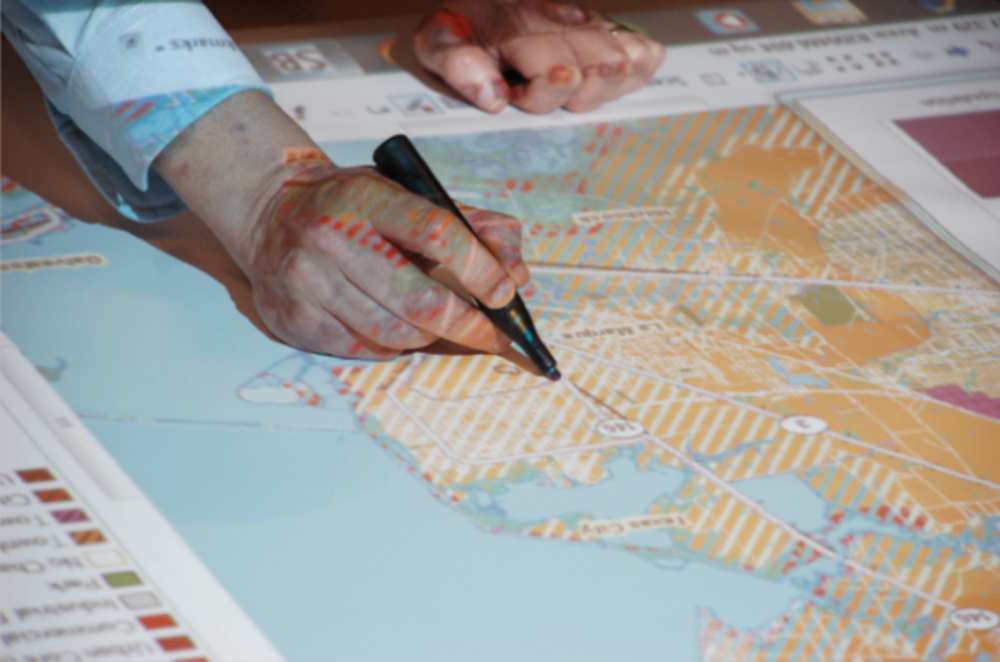
Meet the Liaisons









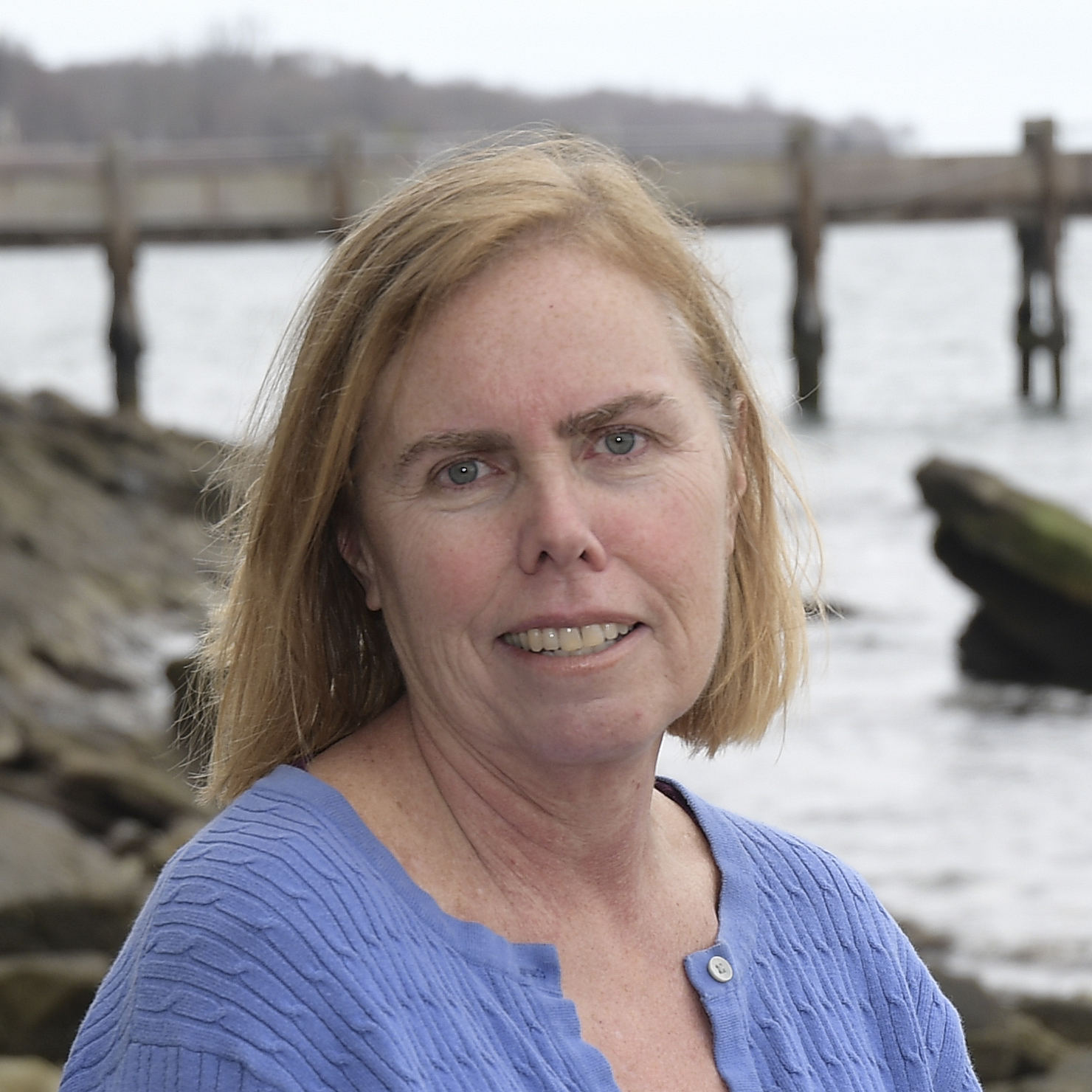


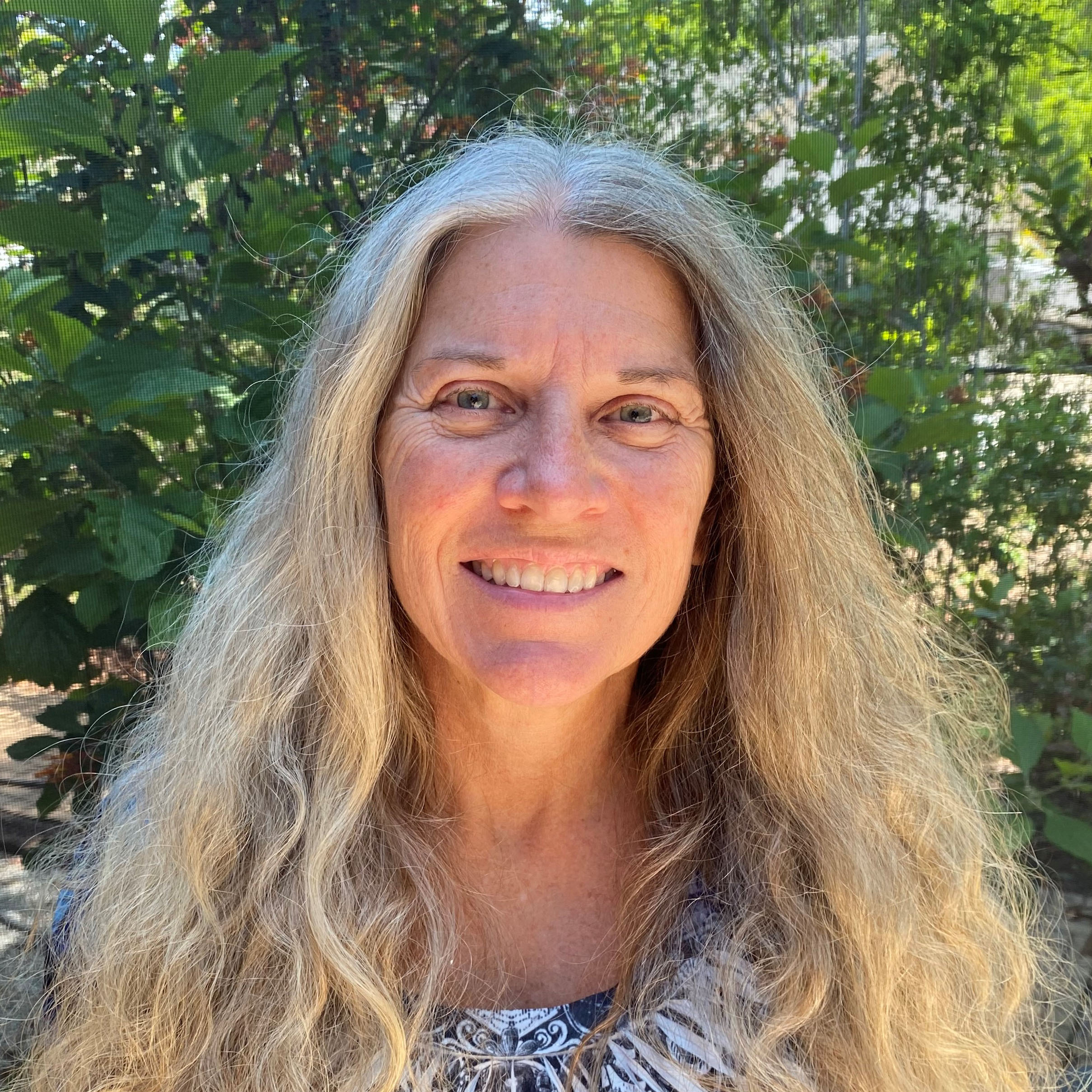


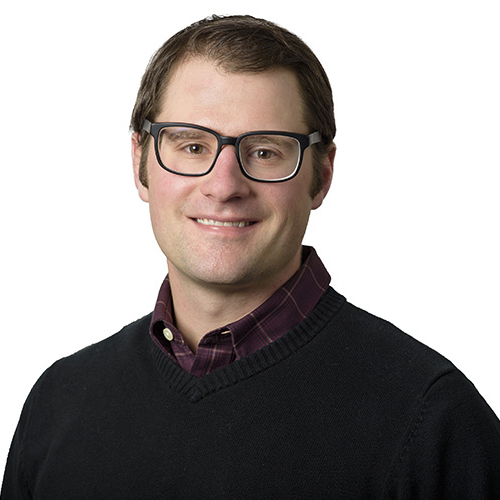


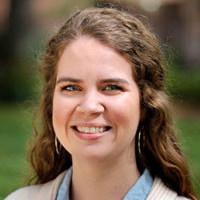





























Federal Liaisons Map
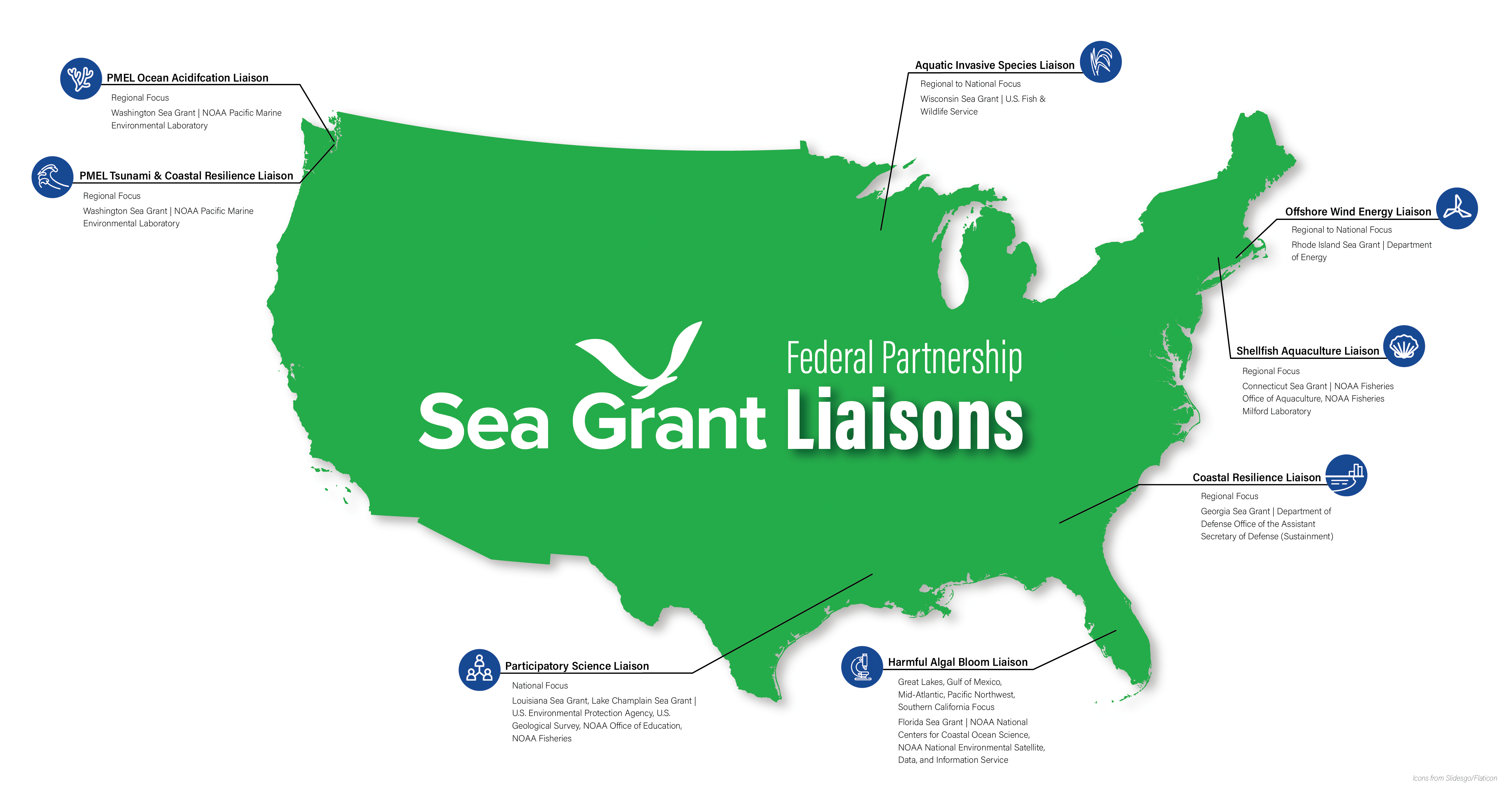

PMEL Ocean Acidification Liaison
Partners: Washington Sea Grant and NOAA Pacific Marine Environmental Laboratory
Location: Seattle, WA (with regional to national focus)
The National Oceanic and Atmospheric Administration (NOAA), NOAA Sea Grant, and Washington Sea Grant (WSG) created the Ocean Acidification (OA) Liaison position in cooperation with the Pacific Marine Environmental Laboratory (PMEL) to foster collaborations across NOAA, partner organizations, communities, and stakeholders who need science-based outreach, data, and tools to understand the threats and impacts of ocean acidification.
PMEL Tsunami & Coastal Resilience Liaison
Partners: Washington Sea Grant and NOAA Pacific Marine Environmental Laboratory
Location: Seattle, WA (with regional focus)
The National Oceanic and Atmospheric Administration (NOAA), NOAA Sea Grant, and Washington Sea Grant (WSG) combined efforts to create the Tsunami and Coastal Resilience Liaison position in cooperation with the Pacific Marine Environmental Laboratory (PMEL). This position fosters collaboration across NOAA, partner organizations, communities, and stakeholders who need science-based outreach, data, and tools to understand tsunami hazards in the Pacific Northwest.
Partners: Louisiana Sea Grant, Lake Champlain Sea Grant, U.S. Environmental Protection Agency, U.S. Geological Survey, NOAA Office of Education and NOAA Fisheries
Location: Louisiana (with national focus)
The Community Science Liaison will bridge work across and within the U.S. Environmental Protection Agency, NOAA, the U.S. Geological Survey and the national Sea Grant network to build inclusive participation in community science programs that contribute water data for federal, state and tribal agencies. This Liaison will work to enhance diversity of participation so community science better represents communities; perform an agency asset audit, recommend standardized practices, provide training and establish a path toward a data commons; and work toward greater data acceptance and extending community science data usage to address water resources-related environmental challenges.
Partners: Wisconsin Sea Grant and U.S. Fish & Wildlife Service
Location: Wisconsin (with regional to national focus)
The Aquatic Invasive Species Liaison will help improve the management and effectiveness of aquatic invasive species outreach conducted by agencies, industry and other stakeholders, which is critical to achieving success in aquatic invasive species prevention. Specifically, the Liaison will promote and expand the national Stop Aquatic Hitchhikers! and Habitattitude campaigns that Sea Grant helped to establish, developing metrics and standards for performing outreach effectiveness assessments, and create an aquatic invasive species outreach community of practice for aquatic invasive species professionals nationwide.
Partners: Michigan Sea Grant and NOAA Great Lakes Environmental Research Laboratory
Location: Ann Arbor, MI (with regional focus)
The National Oceanic and Atmospheric Administration (NOAA) Great Lakes Environmental Research Laboratory (GLERL) and the Great Lakes Sea Grant Network established a liaison position in 2001 to facilitate the transfer of information between Sea Grant specialists and GLERL staff. More recently, this role has been reenvisioned to broaden engagement across the region, including coordination with NOAA's Great Lakes Regional Collaboration Team and the eight Sea Grant programs in the Great Lakes on shared priorities.
Partners: Florida Sea Grant, NOAA’s National Centers for Coastal Ocean Science and NOAA’s National Environmental Satellite, Data, and Information Service
Location: Florida (with Great Lakes, Gulf of Mexico, Mid-Atlantic, Pacific Northwest and Southern California focus)
The Harmful Algal Bloom Liaison will work with federal partners and communities to help manage harmful algal blooms, a significant, growing and immediate environmental, economic and health crisis facing our coasts. This Liaison will coordinate harmful algal bloom communications and the development of new data-driven harmful algal bloom communication tools among three NOAA line offices to better serve decision-making end users tasked with addressing this growing concern. The overall project will be managed through both an advisory committee and points of contact that will help develop a new community of practice to leverage harmful algal bloom expertise with the networking and facilitation skills of extension agents around the country.
Offshore Wind Energy Liaison
Partners: Rhode Island Sea Grant and U.S. Department of Energy
Location: Narragansett, RI (with regional to national focus)
The Offshore Wind Energy Liaison will apply the core strengths and diverse network capacity of multiple Sea Grant programs to contribute and respond to the nation’s rapidly evolving offshore wind energy development opportunities. The focus of the Liaison will be to identify community information needs and disseminate objective resources to stakeholders, enabling them to engage as informed and empowered participants in offshore wind energy development decision-making. The Liaison will build on previous Sea Grant partnerships with stakeholders to expand working waterfronts to include offshore wind energy.
Shellfish Aquaculture Liaison
Partners: Connecticut Sea Grant, NOAA Fisheries Office of Aquaculture and Milford Lab
Location: Milford, CT (with Northeast regional focus)
The overall goal of the Shellfish Aquaculture Liaison is to enable, augment and accelerate the exchange of ideas and information between Milford Lab researchers and end users in the Northeast U.S. Specifically, this Liaison will use regional aquaculture extension to provide region-specific and timely feedback from the shellfish aquaculture industry to help guide the Milford Lab research, accelerate technology transfer from the Milford Lab research for the benefit of the shellfish aquaculture industry, and engage the academic research community in collaborative projects to supplement capacity at the Milford Lab to address ongoing and emerging research needs.
Coastal Resilience Liaison
Partners: Georgia Sea Grant and U.S. Department of Defense Office of the Assistant Secretary of Defense (Sustainment)
Location: Georgia (with Southeast regional focus)
The Coastal Resilience Liaison will harness the unique capabilities of the Sea Grant network to integrate federally-funded research, meet end-user needs, and augment science and research engagement with user communities as it relates to coastal resilience. Specific goals of the Liaison are to facilitate the transfer of information between NOAA Sea Grant and military installations in and adjacent to U.S. coastal areas; leverage Sea Grant’s significant stakeholder engagement and coastal community resilience expertise with compatible land use planning, conservation and coastal resiliency efforts occurring on and around military installations; and encourage greater collaborative coastal resilience efforts between Department of Defense facilities and coastal communities.


